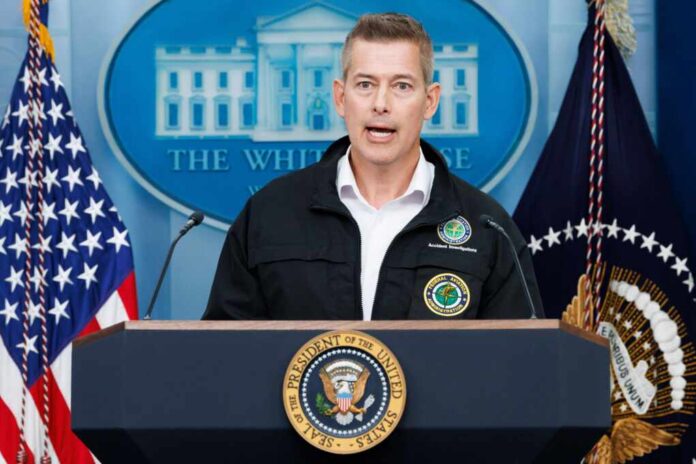
America’s entire air travel system was exposed as dangerously outdated after a deadly DC midair collision, forcing a $31.5 billion overhaul that tests both political will and national priorities.
Story Snapshot
- The first major U.S. passenger air disaster in over 15 years ignited urgent calls for air traffic control reform.
- Transportation Secretary Sean Duffy, with Trump administration backing, is leading a $31.5 billion modernization plan targeting obsolete technology and safety risks.
- Congress has approved $12.5 billion in initial funding, but political, technical, and operational hurdles remain for full implementation.
- The overhaul seeks to replace aging copper wires with fiber optics, upgrade radar, and launch unified ATC software to safeguard American skies.
Deadly Collision Forces National Reckoning Over Air Traffic Control Safety
The January 2025 midair collision over the Potomac River near Ronald Reagan National Airport killed 67 people and shattered America’s long-standing record of passenger air safety. For more than a decade, the U.S. had avoided major passenger airline disasters, but this tragedy revealed deep cracks in the nation’s air traffic control (ATC) infrastructure. The crash was a wake-up call, exposing vulnerabilities in outdated technology and insufficient staffing that experts and industry insiders had warned about for years.
Transportation chief Sean Duffy details $31.5B air-traffic improvements to ‘Pod Force One’ https://t.co/Td2ot95ag9 pic.twitter.com/DT4uu52HAa
— New York Post (@nypost) August 13, 2025
Beyond the DC tragedy, a 90-second radar and communications blackout at Newark Liberty International Airport in early 2025 underscored just how fragile critical ATC systems have become. That outage, traced to a failed copper wire, forced emergency procedures and highlighted the risks of relying on legacy infrastructure built decades ago. Newark’s incident was not isolated; over three years, the DC airspace alone experienced 85 near-misses, and the FAA struggled with repeated system outages nationwide. These failures not only endangered lives but also caused costly delays and eroded public confidence in the government’s ability to ensure air travel safety. The increasing complexity of U.S. airspace, including the rise of drones and advanced aircraft, only amplified the urgency for reform.
Watch a report: Passenger aircraft crashes in Potomac River near Reagan National Airport
Trump Administration and Congress Move to Modernize ATC—But Face Major Obstacles
Transportation Secretary Sean Duffy, a former congressman and media personality, quickly took the lead in responding to the crisis, backed by President Trump’s administration. Duffy announced a sweeping $31.5 billion plan to overhaul the ATC system, the most ambitious effort since the 1990s. The plan includes replacing outdated copper with modern fiber optic communications, upgrading radar across the country, and developing a unified software platform to replace technology dating back to 1995. Congress approved $12.5 billion in initial funding by July 2025—a rare show of bipartisan agreement. Duffy set a bold goal: complete the overhaul within four years, aiming to restore American leadership in aviation safety and efficiency. Airlines, airports, and technology vendors like Verizon have already begun work on urgent upgrades at major hubs.
Despite initial momentum, significant hurdles remain. Modernizing the ATC system requires seamless coordination between the Department of Transportation, the FAA, Congress, and a workforce of air traffic controllers already stretched thin. The FAA must balance the need for rapid upgrades with maintaining operational continuity and safety. Labor groups emphasize the need for robust training as new technologies come online. Political critics voice concerns about cost overruns, rushed implementation, and the risk of sacrificing safety for speed. Past attempts to overhaul or privatize ATC have failed due to bureaucratic inertia and political gridlock, raising questions about whether this effort will succeed where others stalled. The Trump administration’s ability to deliver on this high-stakes promise will be closely watched by both allies and skeptics.
Sources:
Sean Duffy: NASA, Transportation Secretary
Sean Duffy – NASA People
U.S. Transportation Secretary Sean Duffy
Sean Duffy – Wikipedia

























